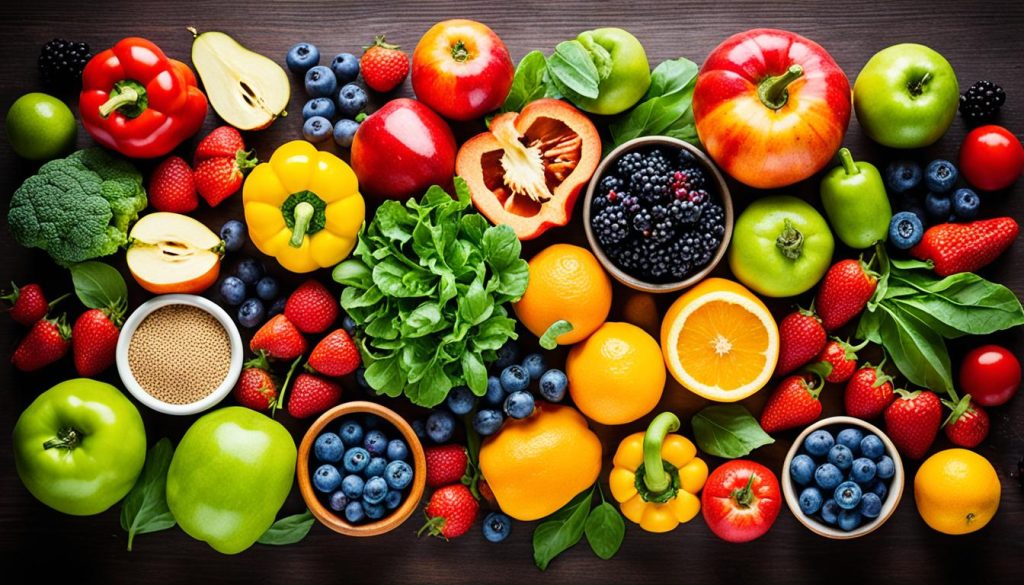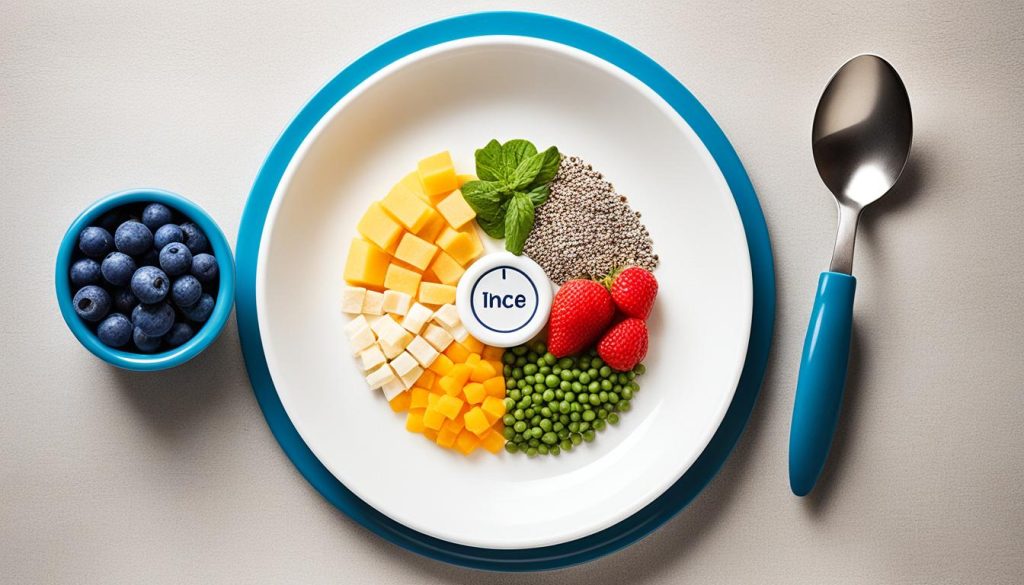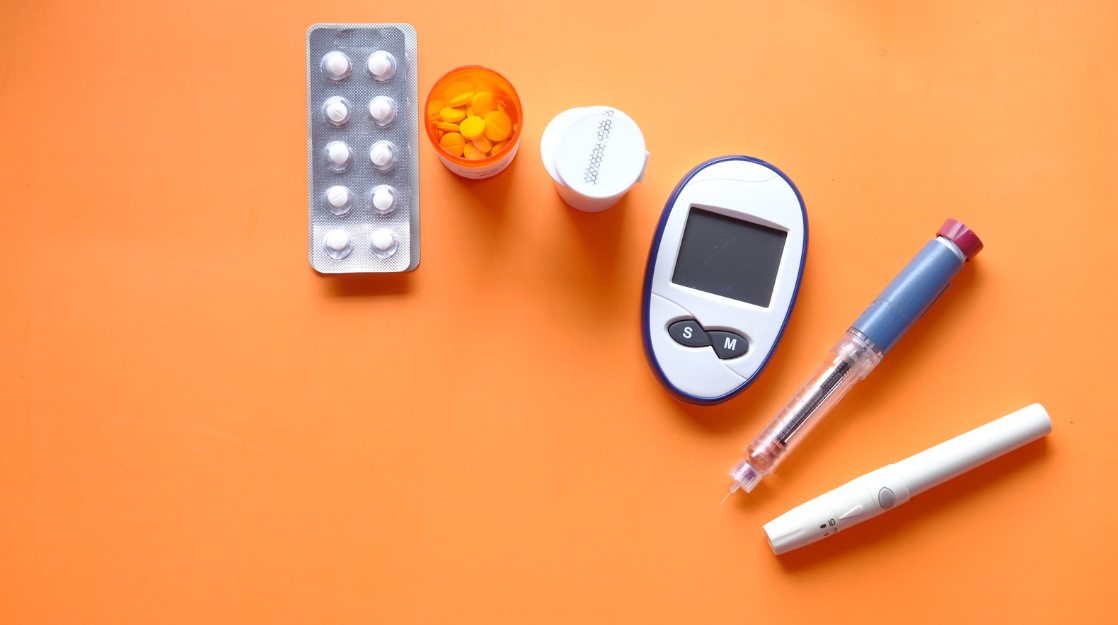Welcome to our guide on how to lower insulin levels. Insulin, a crucial hormone produced by the pancreas, plays a pivotal role in regulating blood sugar levels. However, consistently high levels of insulin, often caused by factors like a high-carbohydrate diet, can lead to insulin resistance, a condition associated with various health issues, including type 2 diabetes.
In this comprehensive guide, we’ll explore effective strategies to help you naturally lower your insulin levels and improve your overall health. From dietary changes and exercise routines to lifestyle modifications and stress management techniques, we’ll provide practical tips and advice to assist you on your journey to better metabolic health.
So, whether you’re looking to manage your weight, reduce your risk of developing diabetes, or simply improve your overall well-being, our guide on how to lower insulin levels will provide you with the information you need to take control of your health.
How to Lower Insulin Levels?
Follow a Lower-Carb Eating Plan
A lower-carb eating plan can be beneficial for lowering insulin levels and managing blood sugar naturally. Research has shown that reducing carbohydrate intake can improve insulin sensitivity and help decrease insulin production. This can be particularly effective for individuals with conditions such as obesity, diabetes, metabolic syndrome, and PCOS.
Lower-carb diets focus on limiting the consumption of high-carbohydrate foods such as refined grains, sugary snacks, and sweetened beverages. Instead, they emphasize nutrient-dense foods that are rich in protein, healthy fats, and fiber.
Here are some insulin-lowering tips and strategies to incorporate into a lower-carb eating plan:
- Choose complex carbohydrates over simple sugars: Opt for whole grains, legumes, and vegetables that provide sustained energy and have a lower impact on blood sugar levels.
- Increase fiber intake: Fiber-rich foods like fruits, vegetables, and whole grains can help regulate blood sugar and reduce the need for large insulin releases.
- Include lean proteins: Incorporate lean sources of protein such as fish, poultry, tofu, and legumes to promote satiety and stabilize blood sugar levels.
- Focus on healthy fats: Include sources of healthy fats like avocados, nuts, seeds, and olive oil to provide essential nutrients and promote insulin sensitivity.
The Benefits of a Lower-Carb Eating Plan:
Following a lower-carb eating plan can offer various benefits, including:
- Improved insulin sensitivity: Lower-carb diets have been shown to increase insulin sensitivity, allowing cells to more effectively respond to insulin signals. This can help reduce insulin levels and promote better blood sugar control.
- Weight management: Lower-carb eating plans have been associated with weight loss and the reduction of excess body fat, which can have a positive impact on insulin resistance and insulin levels.
- Reduced risk of chronic diseases: Lower-carb diets can help lower the risk of obesity, type 2 diabetes, metabolic syndrome, and PCOS, all of which are conditions associated with elevated insulin levels.
- Stable energy levels: A lower-carb eating plan can prevent blood sugar spikes and crashes, providing steady energy throughout the day.
| Food Groups to Prioritize | Food Groups to Limit |
|---|---|
| Fruits | Sugary drinks |
| Vegetables | Processed grains |
| Lean proteins | High-sugar snacks |
| Healthy fats | Added sugars |
| Whole grains | Refined carbohydrates |
Consider Supplementing with Apple Cider Vinegar
When it comes to managing insulin levels, apple cider vinegar may offer some potential benefits. This natural remedy has been associated with preventing insulin and blood sugar spikes after meals, particularly when consumed alongside high-carb foods. While the results of studies on apple cider vinegar’s impact on insulin levels are mixed and require further research, it is still worth considering as a supplement in your quest to lower insulin quickly.
Apple cider vinegar is believed to work by slowing down the digestion of carbohydrates, which can help regulate blood sugar and insulin responses. Additionally, it may increase insulin sensitivity, making your body more efficient at utilizing insulin and reducing the need for an excessive production.
It’s important to note that apple cider vinegar should be used as a supplement and not as a sole treatment for insulin management. Taking apple cider vinegar, along with other dietary and lifestyle changes, can enhance your efforts to lower insulin levels effectively.
| Foods that lower insulin production: | Lower Insulin Levels Supplements: |
|---|---|
|
|
While these foods and supplements are not guaranteed to lower insulin levels on their own, they can make a positive contribution to your overall insulin management strategy. Always consult with your healthcare provider before starting any new supplements.

Apple Cider Vinegar: How to Incorporate It into Your Routine?
If you are considering adding apple cider vinegar to your daily regimen, here are a few tips to help you get started:
- Start with small amounts: Begin with 1-2 teaspoons of apple cider vinegar diluted in water, and gradually increase the dosage over time.
- Consume it before meals: Drinking apple cider vinegar around 15-30 minutes before a meal may help minimize post-meal blood sugar spikes.
- Mix it with other foods: If the taste is too strong, try adding apple cider vinegar to a glass of warm water, tea, or incorporate it into dressings and marinades.
Remember, apple cider vinegar is not a quick fix for insulin management, and its effectiveness may vary from person to person. However, incorporating it into a balanced approach that includes dietary changes, exercise, and other evidence-based strategies can contribute to lowering insulin levels and improving overall health.
Keep an Eye on Portion Sizes
Eating large amounts of foods that cause the body to produce extra insulin can contribute to hyperinsulinemia. To lower insulin levels for weight loss, it’s important to keep an eye on portion sizes and consume fewer calories. This approach has consistently shown to increase insulin sensitivity and decrease insulin levels, especially in individuals with excess weight and obesity (First source).
Portion control plays a crucial role in managing insulin levels. By eating smaller, more balanced meals, you can avoid large insulin spikes and promote a more stable blood sugar response.
Here are some tips to help you practice portion control:
- Aim to fill half of your plate with non-starchy vegetables like leafy greens, broccoli, and peppers. These foods are low in calories and have minimal impact on insulin levels.
- Limit your intake of calorie-dense foods such as processed snacks, sugary drinks, and desserts. These foods can cause insulin levels to spike and contribute to weight gain.
- Use smaller plates and bowls to create the illusion of a fuller meal. Research suggests that people tend to eat less when using smaller dishware.
- Eat mindfully and pay attention to your hunger and fullness cues. Slow down while eating and savor each bite to prevent overeating.
By incorporating these portion control strategies into your daily routine, you can effectively manage insulin levels, support weight loss efforts, and improve overall health. Remember, it’s not just about what you eat, but also how much you eat that can make a significant difference in lowering insulin levels for weight loss.

Lower Your Intake of All Forms of Sugar
Sugar, particularly added sugar, is associated with insulin resistance and metabolic disease. High intake of sugar in any form has been shown to increase insulin levels and promote insulin resistance in the long term. If you’re struggling with high insulin levels but not diabetic, reducing your sugar consumption can have a significant impact on improving your insulin sensitivity.
The Link Between Sugar and Insulin Resistance
When we consume sugar, our bodies break it down into glucose, which enters the bloodstream and causes blood sugar levels to rise. In response, the pancreas releases insulin to help regulate glucose levels by transporting it into cells to be used for energy or stored for later use.
However, when we consistently consume high amounts of sugar, especially in the form of processed foods and sugary beverages, our bodies can become overwhelmed with glucose. This leads to an overproduction of insulin and, over time, may result in insulin resistance.
Insulin resistance is a condition where cells in the body become less responsive to insulin’s actions, causing higher insulin levels to compensate. It is a precursor to type 2 diabetes and is closely associated with obesity, cardiovascular disease, and other metabolic disorders.
How to Reduce Sugar Intake?
The first step in lowering your intake of sugar is to be mindful of hidden sugars in processed foods. Many packaged products contain added sugars that can quickly add up. Be sure to check food labels for ingredients such as high-fructose corn syrup, dextrose, sucrose, and maltose, as these are all forms of added sugars.
Instead, focus on whole, unprocessed foods such as fruits, vegetables, lean proteins, and whole grains. These foods provide essential nutrients without the added sugars. When cooking or baking, try using natural sweeteners like stevia, monk fruit, or small amounts of honey or maple syrup instead of refined sugar.
Here’s an overview of common sugary foods and their healthier alternatives:
| Sugary Foods | Healthier Alternatives |
|---|---|
| Soda and sweetened beverages | Water, unsweetened herbal tea, or infused water |
| Cookies and pastries | Homemade oatmeal cookies, energy balls made with dates and nuts |
| Candy and chocolates | Fresh fruit, dark chocolate with a high cocoa content |
| Sugary cereals | Whole grain cereals with no added sugars |
By making these changes, you can support your body in naturally regulating insulin levels and improving insulin sensitivity. Remember, small dietary changes can make a big difference in managing insulin resistance and promoting overall health.

Benefits of Physical Activity and Cinnamon
Regular physical activity plays a crucial role in treating high insulin levels and reducing insulin resistance. Engaging in both aerobic exercises, such as brisk walking or cycling, and resistance training, like weightlifting or bodyweight exercises, has been proven to lower insulin levels and improve insulin sensitivity across various populations (First source).
Physical activity helps to increase glucose uptake by the muscles, allowing for better blood sugar control and reducing the need for excessive insulin production. It also aids in weight management, which further contributes to improved insulin function (First source).
Another natural approach to lowering insulin levels is cinnamon supplementation. Although further research is required to fully understand its mechanisms, cinnamon has shown potential in enhancing insulin sensitivity and reducing insulin levels (First source).
Incorporating regular physical activity into your routine and considering cinnamon supplementation may provide valuable support in managing and reducing high insulin levels. However, it’s essential to consult with a healthcare professional before making any significant changes to your exercise or supplement regimen.
Conclusion
In conclusion, managing insulin levels is crucial for overall health, particularly for individuals with diabetes or insulin resistance. By incorporating lifestyle changes such as regular physical activity, a balanced diet rich in whole foods and low in refined sugars, and maintaining a healthy weight, it’s possible to help regulate insulin production and sensitivity. Additionally, certain foods and supplements, such as fiber-rich foods, cinnamon, and chromium, may aid in stabilizing blood sugar levels and reducing insulin resistance.
Remember, always consult with a healthcare professional before making significant changes to your diet or lifestyle, especially if you have underlying health conditions. By taking proactive steps to lower insulin levels, you can improve your overall well-being and reduce the risk of developing complications related to insulin resistance or diabetes.

